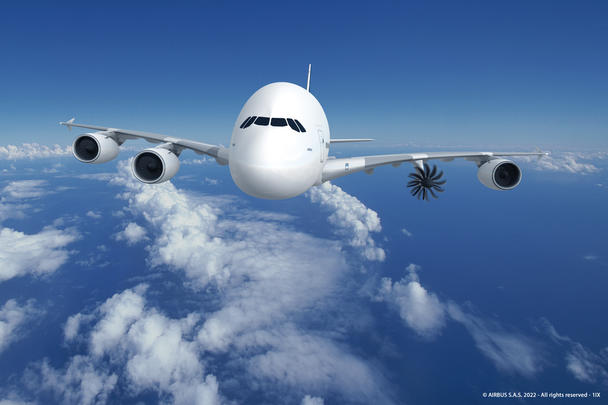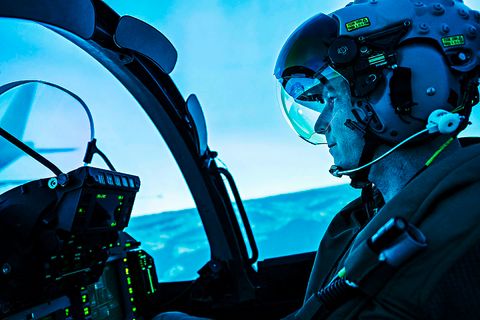Could an open fan engine cut carbon emissions for more sustainable aviation?

The technologies being developed for the next-generation fuel-efficient propulsion systems – and whose progress Airbus follows closely – are taking shape at all the big aero-engine makers, here we focus on one of these: CFM International’s “open fan” technology.
The open fan architecture is a key component of the engine maker’s “Revolutionary Innovation for Sustainable Engines” (RISE) technology development programme – which aims to demonstrate and mature a range of new technologies for future engines that could enter service by the mid-2030s.
Going forward, open fan technology will also be the focus of a major Airbus flight demonstration campaign to be performed in collaboration with CFM in the second half of this decade.

Joint flight-testing ambitions
The joint demonstration programme will use shared flight test assets. Provisionally the plan is for CFM to perform engine ground tests, along with flight test validation at GE Aviation’s Flight Test Operations centre in Victorville, California, USA.
A second phase of flight tests will be performed from the Airbus flight test facility in Toulouse, France, in the second half of the decade. For these tests, the open fan engine will be mounted under the wing of a specially configured and instrumented A380 testbed aircraft.
The joint Airbus and CFM objectives for the open fan joint demonstration on the A380 are extensive. The high-level goals include: evaluation of open fan propulsive efficiency and performance on an aircraft; acceleration and maturity of technologies through ground testing; assessment of aircraft/engine integration and aerodynamics (thrust, drag, loads); and evaluation of internal and external noise levels.
Prediction capabilities are key to find the right design that meets both the fuel efficiency and the acoustic targets (for the communities around airports and also for passengers inside the cabin). And because CFM’s engine and the wing will be very close-coupled, these capabilities have to be developed in close collaboration.
In addition, Airbus and CFM will collaborate on understanding the use of hybrid-electric capabilities and ensuring compatibility with 100% Sustainable Aviation Fuel (SAF).
Preparing the hardware for flight tests on an A380 testbed…
However, before any of the above objectives can be investigated, between now and the first demonstration flight in the second half of the decade, an intensive phase of Engineering preparatory work is planned.
Pascal Arrouy, Airbus’ Open Fan Architect in the “Propulsion of Tomorrow” R&T programme explains: “We will first need to determine the flight physics constraints, design and assessments for the flight-test demonstration (FTD) engine installation. These will include: definition of the pylon ‘aero-lines’ (ie. the aerodynamics and physical geometries), assessment of loads, handling qualities and performance and preparation of modeling to support flight-test analysis.”
In addition, the pylon with the engine mounts and attachment will be jointly designed for minimising weight and vibration transmission to the cabin, as well as engine system integration. The fuselage structure affected by the propulsion system impact will also be studied.
Various aircraft systems will also need to be modified and preparatory tests performed to ensure that the behaviour of the A380 flight test aircraft with an open fan engine installed can be well understood for flight clearance and data validity. Specific areas of focus will include: power management (including open fan compatibility with hybrid-electric aircraft architectures); integration of the engine control systems; flight controls optimisation; fuel distribution; vibration analysis, and instrumentation installation.
“Once all these activities are complete, we will be able to move to the next phase which is the physical manufacture and assembly of the modifications to the aircraft including the new customised pylon,” explains Pascal. “This will be followed by specific tests on engine components to support the dossier needed for ultimate flight clearance of the complete package.”
Meanwhile inside the aircraft, workstations will also be installed to accommodate dedicated flight test engineers and technicians, who will monitor and measure the in-flight performance of the various mission system sensors installed. To this end the aircraft will be heavily instrumented with hundreds of sensors, including microphones, accelerometers, static pressure sensors and cameras.

The big picture ahead
For preparing the future, Airbus is committed to meeting the Paris Agreement targets and leading the decarbonisation of the aviation sector in full collaboration with all stakeholders – including engine manufacturers. Between now and 2035, Airbus’ R&T is focused on testing various technologies to reduce aircraft emissions. These include: alternative fuels with 100% SAF compatibility before 2030; hydrogen technologies; hybridization; wide scope of inter-dependent solutions which will collectively contribute to Airbus’ decarbonisation ambitions. With these planned collaborative tests and demonstration of open fan technology with CFM we will hopefully be a signification set closer to achieving this.
From two counter-rotating fans to a single rotating fan + one fixed…
In the mid-1980s GE developed and flight-tested the GE36 “Unducted Fan” (UDF) engine demonstrator. The GE36 UDF relied on a forward fan that was driven by a dedicated turbine, while the rear fan was driven by another turbine which rotated in the opposite direction.
Fast-forward to 2017, when as part of a European Clean Sky initiative, Safran had developed a revitalised “Contra-Rotating-Open-Rotor” (CROR) concept and subsequently ground-tested it. CROR and the GE36 were both pusher configurations (blades at the rear) featuring two sets of fan blades which rotated in opposing directions.
Building on the CROR research, CFM’s open fan demonstrator includes many improvements and simplifications. This is a puller configuration (blades at the front) where the rear set of blades does not rotate. These rear blades are effectively a set of variable-pitch ‘stators’ which can efficiently manipulate the thrust airflow generated by the rotating front set, while further reducing mechanical complexity, weight and noise. With this change, the engine can direct air flow to fly at speeds consistent with conventional turbo fan engine architectures and deliver an improved cabin experience for passengers.



